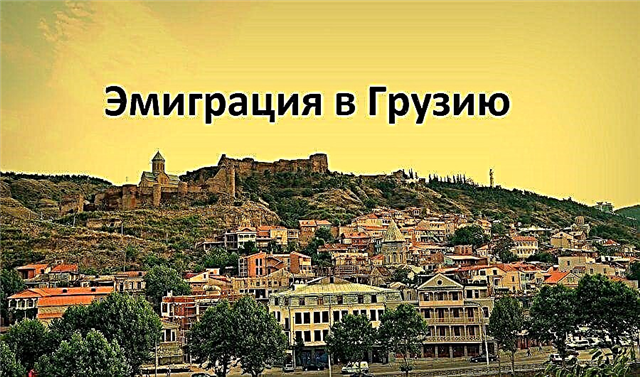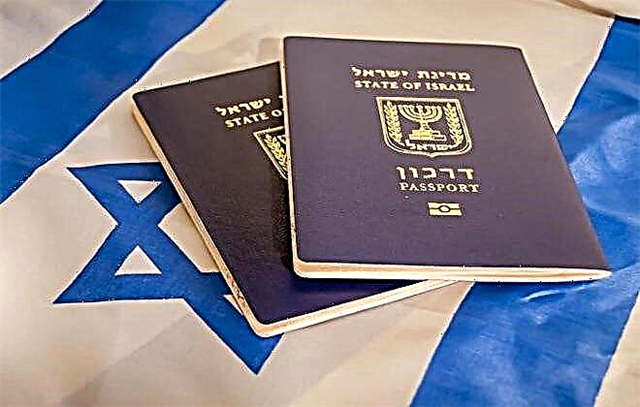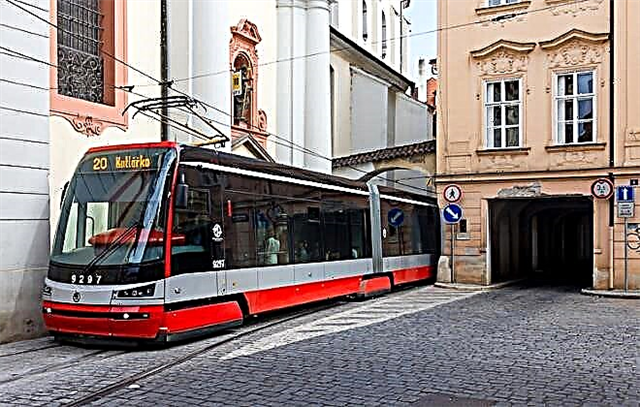The capital of the Czech Republic is always crowded. The city is literally imbued with the spirit of old Europe, and hundreds of thousands of tourists from all over the world come to touch the amazing history and architecture every year. Public transport in Prague is surprisingly easy to handle the huge traffic. According to statistics, the volume of intra-city traffic of the head transport company exceeds a billion passengers per year. The Czech capital has more than enough opportunities for this. A city visitor can only choose a convenient and not too expensive option.

Types of transport in Prague
Prague's urban transport today includes many modes of transportation: metro, buses, trams, commuter trains, ferries, cable cars and taxis. Due to such a variety of transportation problems in the city do not exist even during rush hours and at night.
Prague subway
The Prague metro, or, as it is called here, Metro v Praze or Pražské metro, is the only one in the Czech Republic and the seventh in Europe in terms of passenger traffic. It has only three branches (A - green, B - yellow, C - red) with a total length of just over 50 km.
The total number of stations is 57, three of which are interchange stations. The traffic scheme of Prague, namely the metro, is shown in the following picture:

The intersection of the lines forms a triangle bordering the very center. The designation does not correspond to the order of commissioning. The first branch to work was C. The longest ─ B.
Next year, construction of line D is to begin, which will connect the southeastern part of Prague with the Central Station. The branch is due to open in 2021.
Rolling stocks of two types are used: Siemens M1 (on line C) and trains 81-71M of the Mytishchi plant upgraded at the Skoda plant (on lines A and B). Trains run every 2-4 minutes during peak hours, and 4-10 minutes later on weekends and holidays.
Good to know: to enter the carriage, you must press the button on the doors. The rest of the metro is similar to the Russian one. Most of the stations have one exit, so it is very difficult to get lost, and on the presented diagram you can see how best to get to the main sights of the city.
Tram and bus
The Prague tram is the most popular and busiest land transport in the city. The tram network is one of the largest in Europe. The total length of 35 lines exceeds 140 km, and the fleet includes over a thousand wagons of seven different types produced by Tatra and Škoda.
The trams are equipped with stop information boards, durable and comfortable seats made of plastic or Finnish plywood. All stops have an accurate timetable with exact departure times and information about the cost of travel, a ticket machine and a city map with routes. Something like the one shown below.

The tram starts operating in Prague at 04.30 am (routes 1 to 26). The cars run every 4-15 minutes, depending on the time of day and day of the week. On weekdays during peak hours, from about 7:30 am to 6:30 pm, the intervals are minimal. There are also night routes, we will mention them a little later. Tram number 41 "Nostalgic" runs on weekends and holidays from late March to mid-November every hour from 12 noon to 6 pm.
It is noteworthy that the tram always has an advantage at pedestrian crossings.
Where trams and metro are inaccessible, and on the outskirts, buses help out. Today there are about 300 bus routes in Prague. Below is a map of Prague public transport with their indication.

The fleet consists of modern and comfortable cars of SOR, Karosa, Man, Iveco and Mercedes brands. Since Prague is divided into tariff zones for travel, you can buy a ticket on some buses going from one to the other.
There are no conductors or turnstiles. Passengers themselves validate tickets. To stop on demand, press the red STOP button.
Stops are equipped in the same way as tram stops. Buses run approximately every 6-8 minutes, depending on the route, time of day and day of the week. The traffic intervals at noon increase to 10-20 minutes, and on weekends - up to 15-30 minutes.
By the way, route number 119 runs from the airport. Havel to Dejvická metro station, and bus no. 100 to Zličín metro station. This is the most convenient way to get from the airport to the city.
Train
There are seven railway stations in Prague, the main of which are: Central (Hlavní nádraží), Holešovice (Nádraží Holešovice), Smíchov (Nádraží Smíchov) and Masaryk. Metro stations are located near them.
Esko Praha suburban trains are integrated into the city's unified transport network. The scheme of all 27 routes looks like this:

The electric trains here are comfortable double-decker trains manufactured by Škoda with air conditioning, electronic information boards, dry closets, bike and ski racks, and so on. Commuter services are available from 04.00 to 24.00. Train intervals are from 10 to 30 minutes.
Cable car
The funicular in Prague does not play a large transport role. It is designed to lift sightseers to the top of the Petřín Hill, located in the center of the city, and serves for sightseeing purposes. The total length of the lift is 510 meters. There are no separate tickets for the funicular, it is part of the city's unified public transport system.
The cable car route starts from the station Újezd, then runs through Nebozízek and ends at Petřín. The funicular runs daily from 9:00 am to 11:30 pm (April to October) and from 9:00 am to 11:20 pm (November to March) at intervals of 10-15 minutes.
River communication
Water transport in Prague includes ferry crossings and sightseeing river trams. There are 6 ferry routes in total:
- P1 ─ Sedlec ferry connects Sedlec and Zámky.
- P2 ─ Lysopai ferry connects the Sharetskaya Valley and Podgirya.
- P3 ─ the lute Lazne track runs from Ligovar to the Veslar Island.
- P5 ─ Kotevní - Císařská louka - Výtoň.
- P6 ─ from Lagovicka to Modrana.
Ferries operate daily from 04:30 to 24:30 with an interval of 10-15 minutes. In winter, routes and timetables are subject to change. For example, the line may not work at all in case of unfavorable weather conditions or take a break for several hours.
In addition, there are many private boats along the Vltava: pleasure boats, boats and floating restaurants that operate without a schedule.
Taxi
In Prague, private drivers are involved in the transportation, among which there are many unofficial carriers. Therefore, it is worth saying a few words about how to use public transport in Prague, if it is a taxi.
Verified licensed companies include Taxi Praha, MODRY ANDEL, SEDOP, Halotaxi, City Taxi, Speed Cars and AAA. The logo, license and telephone numbers must be on the front doors of the car. Those who drive unofficially can cheat.
Not everyone uses counters. Many do not understand Russian (a Russian-speaking driver can be ordered). Before boarding, you should definitely check the fare with the dispatcher or driver. The cost of the service consists of:
- 40 CZK for boarding;
- the cost of the trip is 20-28 CZK / km.
- waiting time, which is taken into account at 6 CZK per minute.
The maximum price for a trip within the center should not exceed 300 CZK, and from the airport - 500 CZK.
Movement schedule
It is important for a traveler to know how long public transport is open in Prague. There are so many interesting places in the city that sometimes it is very difficult to plan a route for a day, and a taxi is expensive.
Metro, electric trains, ferries, trams and buses adhere to the timetable exactly. The subway opens at 5 am and closes at 24.00. On Friday and Saturday, she works until 1 am. We have already described how trams and ferries go. Buses start operating at 04:30 and end at 00:30. But there are options for slightly delayed tourists.
Night routes
Night transport in Prague is represented by special bus and tram routes, which practically duplicate the daytime ones and cover the entire city. The night traffic pattern is shown on the following map:

Nine tram lines (routes 51-59) operate incessantly from 00:30 to 04:30 with a 30-minute interval between trains. As you can see in the diagram, Lazarskaya is the central connecting stop with the possibility of switching to other lines.
Bus transport at night is available from midnight to half past four in the morning. The interval of movement of routes from No. 901 to No. 960 varies from 30 to 60 minutes.
The bus from the airport to the center runs every half hour from 00:15 to 5:00. The tariffs do not differ from the daily ones. You can distinguish the night route from the day route by the number on a black background.
Tariffication zones
One of the most important questions for a Russian tourist is the cost of travel. I want to be in time everywhere, see everything, buy, relax and have fun. And preferably without cost overruns.
Transport prices in Prague allow you not to think about finances. By European standards, they are not high even taking into account 15% VAT.
Like most major cities in Europe, the Czech capital is divided into several tariff zones. The diagram is presented below.

By and large, the area of the city is divided into two zones:
- P ─ has a double tariff meaning. It covers the center, a network of metro stations, trams, bus routes No. 100-299 and 901-930, a funicular, ferries and individual trains.
- 0 ─, in turn, consists of two zones: 0 and B (the actual border of the zone is separately highlighted), including bus routes No. 300-420, 951-979, as well as sections of the suburban railway.
The suburbs are divided into nine more zones with simple digital numbering (from 1 to 9).
Buying tickets
There are many places where you can buy a ticket for transport in Prague. Travel documents are universal here ─ the same for all types of transport with time-based tariffication, registered and not.
You can purchase them in several ways:
- in the metro, Trafika kiosks, as well as in special machines in the metro or at stops. The machines only accept coins. It is worth considering that there will be no one to change money at night. Recently appeared new machines accept bank cards, but they are not yet available everywhere;
- In the terminal at the PID (Prague Integrated Transport) ticket office you can buy a ticket for 24 kroons, which is valid for 30 minutes;
- via SMS to number 902 06. Customers wishing to purchase an SMS ticket should not block Premium SMS services (it can be activated free of charge by calling the hotline of a telecom operator). The mobile operator must be Czech. For more up-to-date information, it is worth visiting the official website of Prague Transport (www.dpp.cz);
- via the sejf mobile app (except for discount tickets) or Praha DPP, available for free on Google play and iTunes. The wallet can be topped up from a bank card. A Czech SIM card is not required for this.
You can also buy tickets from tram and bus drivers.
Tickets are divided into short-term (with hourly tariffing) and long-term, which are valid for a day or more. All transport tickets in Prague give the right to travel an unlimited number of times for the time specified in them. They must be composted before the first ride, with the exception of coupons, which are sold stamped and ready for immediate use.
The cheapest way to travel around Prague is with a personalized plastic or virtual card Lítačka (replaced OpenCard), which can be ordered online at www.pidlitacka.cz. The e-ticket is activated within an hour.
The new PID Lítačka app (launched at the end of August) allows you to buy passes with significant discounts not only in Prague, but throughout Central Bohemia.
Savings on travel
Savings on travel can be obtained if you know the rules of transportation, as well as what benefits are provided in the city transport of Prague for 2021:
- free travel for people under 6 and over 70 years old, as well as disabled people (in a chair, with a guide and a dog);
- 50% discount in zones P, 0 and B for passengers under 15 and over 65 years old with a Special Fare Entitlement Document (electronic version costs CZK 120, paper version - 20).
You can carry for free:
- baby carriages;
- muzzled dogs;
- baggage not exceeding dimensions 25 x 45 x 70 cm, tubular up to 150 cm long and up to 20 cm in diameter;
- two pairs of skis with poles, a snowboard or a bag on wheels;
- bike (on the subway not during peak times, on the ferry and on the funicular).
Of course, you need to correctly calculate which ticket to buy, depending on the number of days that you plan to spend in the city.

There is another surefire way to save on transport in Prague: the Prague Card allows you to get discounts on travel and sightseeing. You can travel for free from the airport and back by bus, by river tram along the Vltava.
You can familiarize yourself with the possibilities and order the card at www.praguecard.com. In addition, they will give a city guide.
Schedule and route planning
Planning your own schedule, knowing the routes of public transport in Prague, is as easy as shelling pears. All the necessary information is posted on the portal of the city transport department.
If you have Internet access, just enter the page. It has a simple but accurate and reliable scheduler. You need to enter the waypoints, date, time, indicate a direct route or with transfers, and click on "Search".
For the disabled, there is an opportunity to choose buses and trams with a low landing and metro stations with special lifts. If you press the "Map" button, you can see the routes on a virtual map.
The Prague transport route planner is also available on the website of the Czech Ministry of Transport. The functionality is about the same, and there is no Russian language in the menu either. The language selection on both portals is limited to German, English and Czech.
Each system will display several options with detailed information about transfers, time and distance by stages of the journey, as well as cost.
Fare prices
Payment for transport in Prague does not depend on its type. Tickets are unified. The cost depends on the tariff zone and prepaid time of use. Separate rates apply for residents of Prague.
To activate a short-term travel card for one trip or 1-3 days, it must be composted. In buses and trams, the composters are installed on the handrails. There are no turnstiles in the metro, but validators are available at the entrance.
When changing the mode of transport, the valid ticket does not need to be punched out again.
How much does it cost to use public transport in Prague on the dpp website:
- basic (90 minutes) costs 32 czk for an adult, teenager and student, and 16 czk - for a child or senior passenger;
- short-term (for 30 minutes) ─ 24 and 12 czk, respectively;
- per day (24 hours) ─ 110/55 czk;
- for three days (72 hours) ─ 310 czk for everyone except children and the elderly.
| Tickets | Adult | Child | Teenager | Student | Senor |
|---|---|---|---|---|---|
| Standard 90 minutes | 32 Kč | 16 Kč | 32 Kč | 32 Kč | 16 Kč |
| Short 30 minutes | 24 Kč | 12 Kč | 24 Kč | 24 Kč | 12 Kč |
| 1 day 24 hours | 110 Kč | 55 Kč | 110 Kč | 110 Kč | 55 Kč |
| 3 days 72 hours | 310 Kč | • | 310 Kč | 310 Kč | • |
| 90 minutes (with the driver) | 40 Kč | 20 Kč | 40 Kč | 40 Kč | 20 Kč |
Durable passes are rated as follows:
- monthly (for 30 days) ─ 550/130 czk;
- quarterly (for 90 days) ─ 1480/360 czk;
- for 5 months (150 days) ─ 2450 czk without exceptions for the age and status of passengers;
- annual (365 days) ─ 3650/1280 czk.
The fare on public transport in Prague for non-personalized electronic and paper passes is:
- for a month ─ 670 czk;
- per quarter ─ 1880 czk;
- for a year ─ 6100 czk.
The price of an SMS ticket does not differ from the usual one, except for the need to pay the operator's tariff for the message.
Transport in Prague for pensioners with confirmation of status is free. Requires a “Special Travel Eligibility Document for Seniors 70 and Over” written on a smart card or senior 70+ paper form.
If you buy tickets from the driver, the price will be higher.
Penalties
Tickets are checked by Dopravni podnik controllers in surface and underground transport throughout the trip. The fine for travel without a ticket is 800 CZK.
If you do not pay within 15 days, the fine is increased to 1500 kroons.
When a valid ticket is left at home, you will have to shell out 50 CZK.
Conclusion
Traveling in Prague by public transport means choosing the right means of transportation. The difficulty lies in choosing the optimal ticket: the longer the validity period, the more profitable the ticket. Therefore, before traveling in the Czech capital, it is worth familiarizing yourself with the rules, maps and routes, as well as installing a mobile application.











